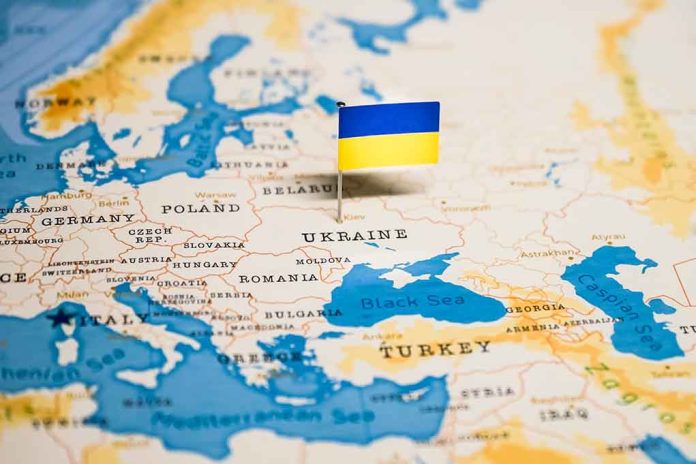
In an unexpected move, President-elect Donald Trump steps into an unofficial diplomatic role to bring stability to the Ukrainian conflict.
At a Glance
- Trump plans to resolve the Ukrainian conflict by suggesting territorial adjustments and a demilitarized zone.
- Key global leaders such as Olaf Scholz, Volodymyr Zelensky, and Vladimir Putin are involved in Trump’s peace strategy.
- Trump’s strategy gained urgency after the Nord Stream pipeline incident that worsened Germany’s economic conditions.
- Ukrainians express both trepidation and resolve towards Trump’s potential influence on the conflict.
Trump’s Unofficial Diplomacy
President-elect Donald Trump has embarked on a diplomatic journey to mediate the Ukrainian conflict. Engaging with key leaders like German Chancellor Olaf Scholz, Ukrainian President Volodymyr Zelensky, and Russian President Vladimir Putin, Trump has positioned himself as a pivotal figure in conflict resolution. His strategy, which promotes territorial adjustments and creating a demilitarized zone, is rooted in addressing Europe’s dependency on Russian energy, a frequent critique of his.
Trump’s actions have intensified after the Nord Stream pipeline incident, exacerbating Germany’s economic challenges, thus highlighting broader geopolitical replanning. His plan involves freezing existing conflict lines and ceding occupied Ukrainian territories to Moscow, with Ukraine delaying NATO membership by 20 years. Despite his unofficial status, Trump’s engagement demonstrates a focus on cooperation opportunities for regional stability.
Responses and Reactions
Ukrainians react with a mix of trepidation and resolve towards Trump’s potential influence, given concerns over his unpredictability and relationship with Putin. While Trump vowed to “stop wars,” his promise to halt aid to Kyiv is unsettling, given the U.S.’s role as Ukraine’s top financial supporter. Ukrainian President Zelensky emphasizes the need for continued bipartisan U.S. support.
Despite uncertainties, Ukrainians remain resilient. Zelenskyy has adjusted his stance to engage in peace talks without stringent conditions. This development aligns with U.S. officials’ aim to portray a willingness for peaceful resolution without overtly directing Ukraine’s decisions. Meanwhile, North Korea’s involvement, supplying artillery shells to Russia, further complicates the situation.
“The deployment of North Koreans to fight in the war is an escalation…,” warns Alexandra Vacroux, a Russian policy expert.
Geopolitical Tensions and Challenges
The geopolitical climate surrounding the Ukrainian conflict is fraught with challenges. Trump’s peace plan prompts skepticism due to his prior interactions with Putin and the harsh impact of energy supply cuts from Russia on Germany. Meanwhile, with Russia still controlling significant Ukrainian territory, achieving peace remains elusive.
Pressures on the Biden administration from both Democrats and Republicans emphasize the importance of diplomatic resolutions. Trump’s involvement, though unofficial, adds a layer to the complex web of international relations determining the future of Ukraine. As negotiations evolve, it remains critical for all parties to carefully navigate towards durable peace and stability for the region.














